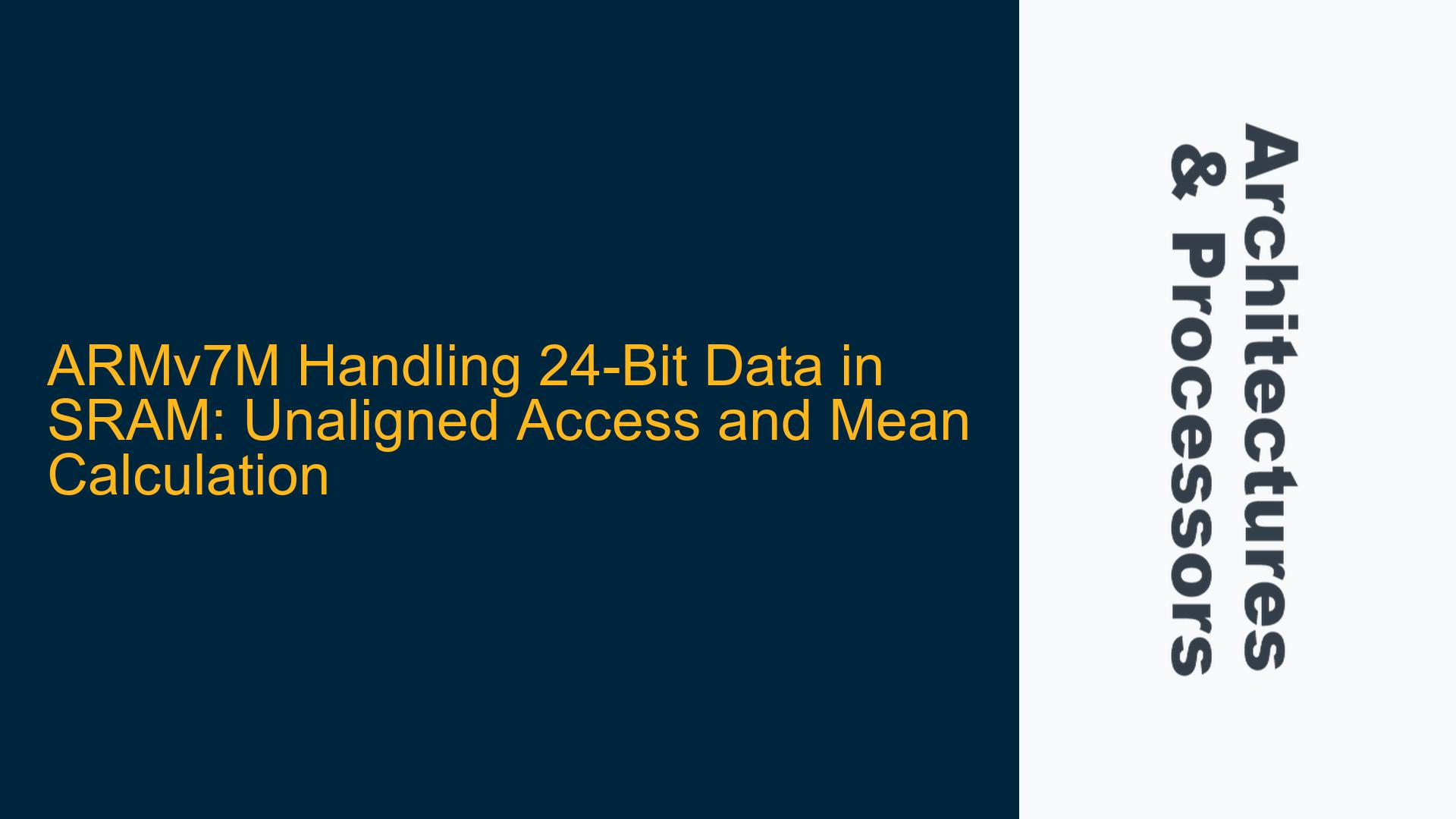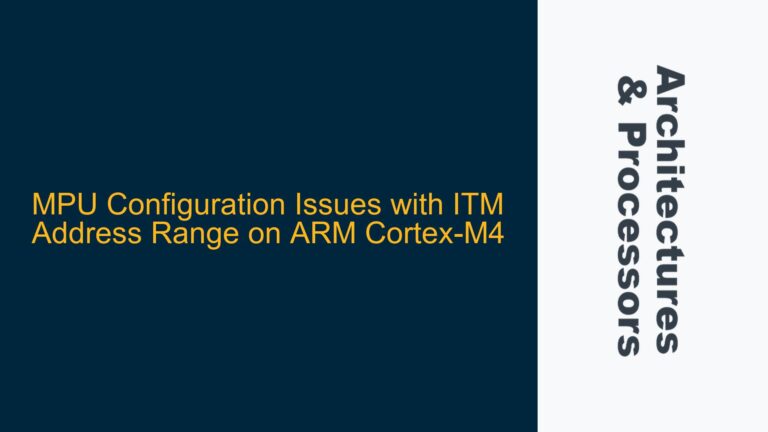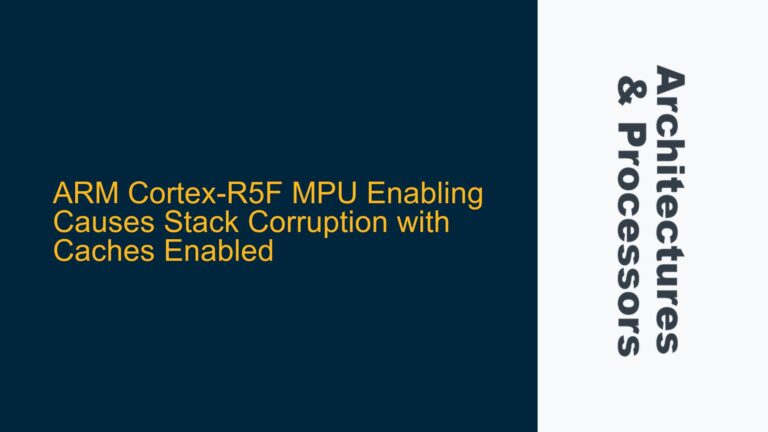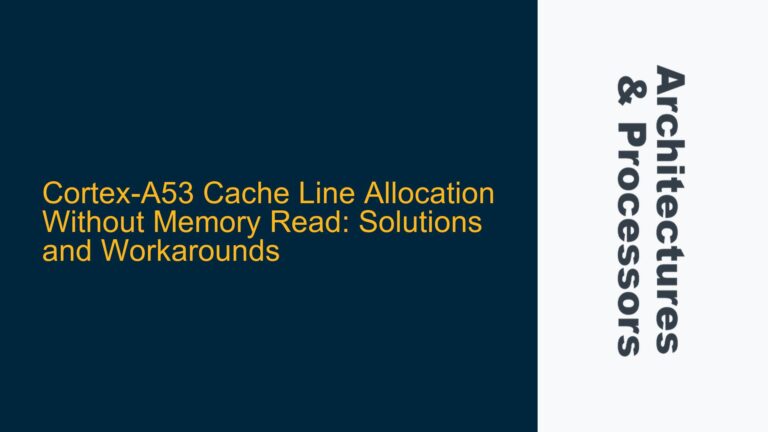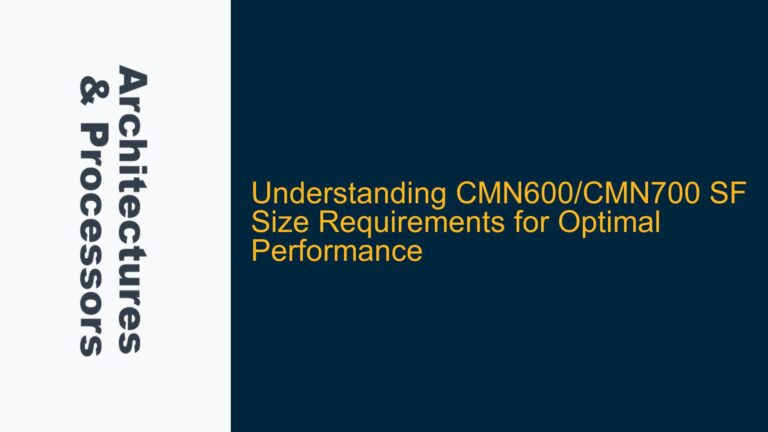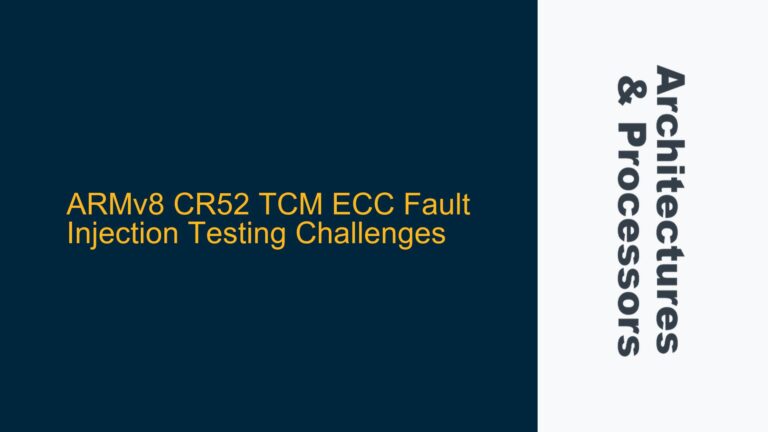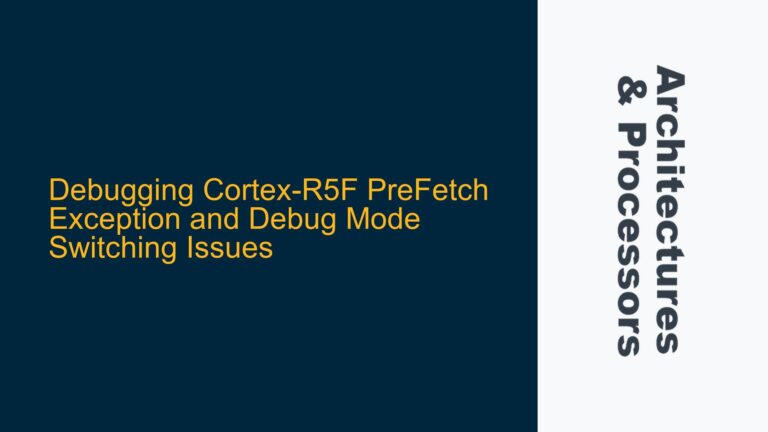ARMv7M 24-Bit Data Storage and Mean Calculation Challenges
The ARMv7M architecture, commonly found in microcontrollers like the Cortex-M series, is designed for efficient and deterministic real-time processing. However, handling 24-bit data in SRAM presents unique challenges, particularly when dealing with unaligned memory access and arithmetic operations. The task involves calculating the mean value of 16 signed 24-bit samples stored consecutively in SRAM starting at address 0x20000200, with each sample occupying 3 bytes. The result must be stored at address 0x20000300. This scenario requires careful consideration of memory alignment, data access patterns, and arithmetic precision.
The ARMv7M architecture supports Thumb and Thumb-2 instruction sets, which are optimized for code density and performance in embedded systems. However, Thumb-2 instructions have limitations when dealing with unaligned data access, especially for non-standard data sizes like 24-bit values. The SRAM in ARMv7M-based microcontrollers is typically byte-addressable, but accessing multi-byte data (e.g., 16-bit or 32-bit) requires proper alignment to avoid performance penalties or bus faults. In this case, the 24-bit samples are stored in a non-standard format, with each sample spanning 3 bytes. This unaligned storage complicates data access and arithmetic operations, as the processor must handle partial word accesses and ensure correct sign extension for signed arithmetic.
The mean calculation involves summing 16 signed 24-bit samples and dividing the result by 16. This requires careful handling of intermediate results to avoid overflow and ensure correct sign extension. The ARMv7M architecture provides instructions for signed and unsigned arithmetic, but the 24-bit data size necessitates additional steps to manage precision and alignment. Furthermore, storing the final result at address 0x20000300 requires ensuring that the storage operation does not violate memory alignment rules or corrupt adjacent data.
Unaligned Data Access and Arithmetic Precision Limitations
The primary challenges in this task stem from unaligned data access and arithmetic precision limitations. The 24-bit samples are stored in SRAM starting at address 0x20000200, with each sample occupying 3 bytes. This storage format results in unaligned access, as the samples do not align with the natural word boundaries of the processor (e.g., 32-bit boundaries). Unaligned access can lead to performance degradation, as the processor may need to perform multiple memory accesses to retrieve a single sample. Additionally, unaligned access can cause bus faults on some ARMv7M implementations, depending on the memory controller configuration.
The ARMv7M architecture supports unaligned access for certain data types, but this support is limited and may not cover 24-bit data. For example, the LDR and STR instructions can handle unaligned access for 32-bit data, but this capability is not guaranteed for smaller or non-standard data sizes. In this case, the 24-bit samples must be accessed using a combination of byte and halfword accesses, which complicates the data retrieval process. Furthermore, the signed nature of the samples requires careful handling of sign extension during arithmetic operations.
Arithmetic precision is another critical consideration. The ARMv7M architecture uses 32-bit registers for arithmetic operations, but the 24-bit samples must be sign-extended to 32 bits before performing addition. This sign extension ensures that the arithmetic operations produce correct results, but it also increases the complexity of the implementation. The summation of 16 signed 24-bit samples can result in a 28-bit intermediate value, which must be handled carefully to avoid overflow. The final division by 16 must also account for the signed nature of the data, as simple bit shifting may not produce the correct result for negative values.
Efficient Data Access and Arithmetic Implementation Strategies
To address the challenges of unaligned data access and arithmetic precision, a structured approach is required. The first step is to retrieve the 24-bit samples from SRAM and sign-extend them to 32 bits. This can be achieved using a combination of byte and halfword accesses, followed by sign extension using arithmetic shift operations. For example, the first sample at address 0x20000200 can be retrieved using a byte access for the first byte and a halfword access for the remaining two bytes. The retrieved bytes can then be combined and sign-extended to 32 bits using the SBFX (Signed Bit Field Extract) instruction or equivalent arithmetic shifts.
Once the samples are retrieved and sign-extended, they can be summed in a 32-bit accumulator. The summation process must handle the 28-bit intermediate result carefully to avoid overflow. This can be achieved by using a 32-bit register for the accumulator and ensuring that the sign extension is maintained throughout the addition process. After summing all 16 samples, the result must be divided by 16 to calculate the mean. For signed division, the arithmetic right shift (ASR) instruction can be used, but care must be taken to handle rounding correctly for negative values.
The final step is to store the result at address 0x20000300. Since the result is a 24-bit value, it must be stored in 3 bytes without violating memory alignment rules. This can be achieved using a combination of byte and halfword stores, ensuring that the stored data does not corrupt adjacent memory locations. The following table summarizes the key steps and instructions for implementing the solution:
| Step | Description | Instructions |
|---|---|---|
| 1 | Retrieve 24-bit sample from SRAM | LDRB, LDRH |
| 2 | Sign-extend sample to 32 bits | SBFX, ASR |
| 3 | Accumulate sum in 32-bit register | ADD |
| 4 | Divide sum by 16 to calculate mean | ASR |
| 5 | Store 24-bit result in SRAM | STRB, STRH |
By following this structured approach, the challenges of unaligned data access and arithmetic precision can be effectively managed, ensuring correct and efficient implementation of the task on the ARMv7M architecture.
